-
 Bitcoin
Bitcoin $93,441.3055
0.28% -
 Ethereum
Ethereum $1,763.2642
-0.99% -
 Tether USDt
Tether USDt $1.0002
0.01% -
 XRP
XRP $2.2013
-0.38% -
 BNB
BNB $598.2222
-0.96% -
 Solana
Solana $151.5372
1.49% -
 USDC
USDC $0.9997
-0.01% -
 Dogecoin
Dogecoin $0.1805
1.24% -
 Cardano
Cardano $0.7261
4.18% -
 TRON
TRON $0.2472
0.68% -
 Sui
Sui $3.2839
10.84% -
 Chainlink
Chainlink $14.9380
0.89% -
 Avalanche
Avalanche $22.2621
0.45% -
 Stellar
Stellar $0.2787
4.56% -
 UNUS SED LEO
UNUS SED LEO $9.2324
1.68% -
 Shiba Inu
Shiba Inu $0.0...01351
0.03% -
 Toncoin
Toncoin $3.1620
0.32% -
 Hedera
Hedera $0.1866
3.67% -
 Bitcoin Cash
Bitcoin Cash $351.4736
-1.59% -
 Polkadot
Polkadot $4.2244
3.79% -
 Litecoin
Litecoin $83.3970
0.79% -
 Hyperliquid
Hyperliquid $18.5780
1.48% -
 Dai
Dai $1.0000
0.01% -
 Bitget Token
Bitget Token $4.4305
-1.84% -
 Ethena USDe
Ethena USDe $0.9995
0.03% -
 Pi
Pi $0.6517
-0.94% -
 Monero
Monero $225.3020
-0.58% -
 Uniswap
Uniswap $5.8005
-3.58% -
 Pepe
Pepe $0.0...08646
-2.09% -
 Aptos
Aptos $5.4430
2.07%
How to buy SOL with local fiat currency (such as USD)?
To buy Solana (SOL) with USD, use centralized exchanges like Coinbase, decentralized exchanges via stablecoins, or peer-to-peer platforms for direct transactions.
Apr 21, 2025 at 08:35 pm
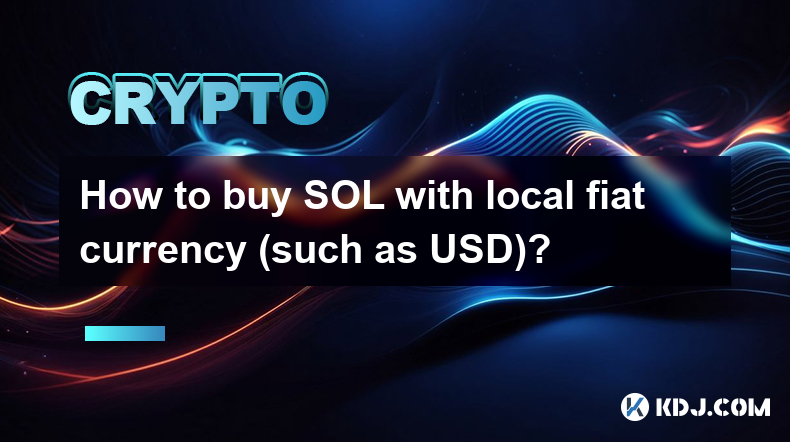
Buying Solana (SOL) with local fiat currency like USD can be a straightforward process if you follow the right steps. This article will guide you through the process of purchasing SOL using USD, detailing each step to ensure you can do so efficiently and securely. We will cover various methods, including using centralized exchanges, decentralized exchanges, and peer-to-peer platforms.
Using Centralized Exchanges to Buy SOL with USD
Centralized exchanges are often the most straightforward way to buy cryptocurrencies like SOL with fiat currency. Here’s how you can do it:
Choose a reputable exchange: Start by selecting a centralized exchange that supports SOL and allows deposits in USD. Popular choices include Coinbase, Binance, and Kraken. Ensure the exchange is available in your region and has a good reputation for security and customer service.
Create an account: Visit the website of your chosen exchange and sign up for an account. You will need to provide personal information such as your name, email address, and sometimes a phone number. Some exchanges may require you to complete a Know Your Customer (KYC) process, which involves submitting identification documents.
Deposit USD: Once your account is set up and verified, navigate to the deposit section of the exchange. Select USD as your deposit currency and follow the instructions to transfer money from your bank account to the exchange. This can usually be done via bank transfer, wire transfer, or sometimes through debit/credit card.
Buy SOL: After your USD deposit is confirmed, go to the trading section of the exchange. Look for the SOL/USD trading pair. Enter the amount of USD you want to spend, and the exchange will calculate how much SOL you can buy. Review the transaction details and confirm the purchase. The SOL will then be credited to your exchange wallet.
Using Decentralized Exchanges to Buy SOL with USD
Decentralized exchanges (DEXs) offer a more private way to buy SOL, but the process can be more complex. Here’s how you can do it:
Choose a DEX: Select a decentralized exchange that supports SOL and allows trading with USD. Examples include Uniswap and SushiSwap, though these typically require you to first convert your USD to a stablecoin like USDT or USDC.
Convert USD to a stablecoin: Since DEXs usually don’t support direct fiat deposits, you’ll need to convert your USD to a stablecoin. You can do this through a centralized exchange or a service like MoonPay. Deposit your USD into the centralized exchange, buy the stablecoin, and then withdraw it to your personal wallet.
Connect your wallet to the DEX: Use a compatible wallet like MetaMask to connect to the DEX. Ensure your wallet is funded with the stablecoin you purchased.
Swap stablecoin for SOL: On the DEX, find the SOL/stablecoin trading pair. Enter the amount of stablecoin you want to swap and review the transaction details. Confirm the swap, and the SOL will be sent to your wallet.
Using Peer-to-Peer Platforms to Buy SOL with USD
Peer-to-peer (P2P) platforms allow you to buy SOL directly from other users, often with more flexible payment options. Here’s how to use them:
Choose a P2P platform: Select a reputable P2P platform that supports SOL and USD transactions. Examples include LocalBitcoins and Paxful, though you may need to check if they support SOL specifically.
Create an account: Sign up for an account on the P2P platform. You will need to provide personal information and may need to complete a KYC process.
Find a seller: Browse the listings to find a seller offering SOL in exchange for USD. Pay attention to the seller’s reputation, the price they are offering, and the payment methods they accept.
Initiate the trade: Once you find a suitable offer, initiate the trade. Follow the platform’s instructions to send the USD to the seller. The platform will hold the SOL in escrow until you confirm that you have sent the payment.
Confirm the transaction: After the seller confirms receipt of the USD, the platform will release the SOL to your wallet. Ensure you review the transaction details and confirm everything is correct before finalizing the trade.
Security Considerations When Buying SOL with USD
When buying SOL with USD, it’s crucial to prioritize security to protect your funds and personal information. Here are some key considerations:
Use strong passwords: Ensure your exchange and wallet accounts are protected with strong, unique passwords. Consider using a password manager to generate and store complex passwords.
Enable two-factor authentication (2FA): Most reputable exchanges and wallets offer 2FA. Enable this feature to add an extra layer of security to your accounts.
Be wary of phishing attempts: Always double-check the URLs of the websites you visit and be cautious of emails or messages asking for your personal information or login credentials.
Use secure networks: Avoid conducting transactions over public Wi-Fi. Use a secure, private internet connection to minimize the risk of data interception.
Keep your software updated: Regularly update your operating system, browser, and any cryptocurrency-related software to protect against vulnerabilities.
Additional Tips for Buying SOL with USD
To enhance your experience and ensure a smooth transaction, consider the following tips:
Research fees: Different platforms charge different fees for buying and selling cryptocurrencies. Compare the fee structures of various exchanges and platforms to find the most cost-effective option.
Monitor market conditions: Cryptocurrency prices can be volatile. Keep an eye on the market to buy SOL at a favorable price. Use tools like price alerts to stay informed.
Diversify your payment methods: Some platforms offer multiple ways to deposit USD, such as bank transfers, credit/debit cards, or even cash. Having multiple options can be useful if one method is unavailable or incurs high fees.
Understand the withdrawal process: Before buying SOL, familiarize yourself with the process of withdrawing it from the platform to your personal wallet. Some exchanges may have minimum withdrawal amounts or additional fees.
Frequently Asked Questions
Q: Can I buy SOL with USD directly on decentralized exchanges?
A: Most decentralized exchanges do not support direct fiat deposits. You typically need to convert your USD to a stablecoin like USDT or USDC on a centralized exchange first, then use that stablecoin to buy SOL on a DEX.
Q: Are there any limits on how much SOL I can buy with USD?
A: The limits on buying SOL with USD can vary depending on the platform you use. Centralized exchanges often have daily or monthly limits based on your account verification level. P2P platforms may have limits set by individual sellers. Always check the specific limits of the platform you are using.
Q: How long does it take to buy SOL with USD?
A: The time it takes to buy SOL with USD can vary. Depositing USD into a centralized exchange can take a few days if done via bank transfer, while using a credit/debit card can be faster. Once your USD is deposited, buying SOL is usually instantaneous. On P2P platforms, the time can depend on the seller and the payment method used.
Q: Can I use cash to buy SOL with USD?
A: Some P2P platforms allow you to buy SOL with cash, though this is less common. You would need to find a seller who accepts cash and arrange a meeting to complete the transaction. Always prioritize safety when conducting in-person cash transactions.
Disclaimer:info@kdj.com
The information provided is not trading advice. kdj.com does not assume any responsibility for any investments made based on the information provided in this article. Cryptocurrencies are highly volatile and it is highly recommended that you invest with caution after thorough research!
If you believe that the content used on this website infringes your copyright, please contact us immediately (info@kdj.com) and we will delete it promptly.
- Two High-Visibility Tokens Are Making Headlines This Week for Very Different Reasons
- 2025-04-25 03:30:12
- Dragoin Combines Real Utility, Transparency, and a Clear Roadmap
- 2025-04-25 03:30:12
- Unstaked (UNSD) Presale Goes Live, Offering 27x ROI At Launch
- 2025-04-25 03:25:11
- As capital continues to rotate across major digital assets, investors are focusing on specific zones where meaningful activity is building
- 2025-04-25 03:25:11
- Sen. Richard Blumenthal (D-CT) Calls Trump's Upcoming Meme Coin Dinner "Outright Evidence of Corruption"
- 2025-04-25 03:20:14
- 5 Crypto Coins to Watch That Put Users in Control
- 2025-04-25 03:20:14
Related knowledge
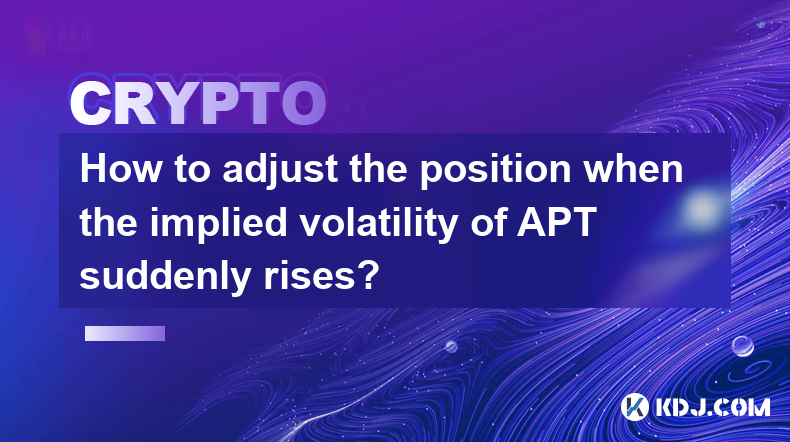
How to adjust the position when the implied volatility of APT suddenly rises?
Apr 24,2025 at 09:42pm
When the implied volatility of APT suddenly rises, it can significantly impact your trading positions. Adjusting your positions effectively requires a thorough understanding of the situation and a strategic approach. In this article, we will explore how to manage your positions when the implied volatility of APT increases unexpectedly. Understanding Imp...

Does the increase in net outflow of APT exchanges represent bullishness?
Apr 24,2025 at 06:57pm
The concept of net outflow of APT (Aptos) from exchanges and its potential correlation with bullish sentiment is a topic of interest within the cryptocurrency community. The net outflow refers to the volume of APT tokens being withdrawn from cryptocurrency exchanges, which can be interpreted as a signal of investor behavior and market sentiment. This ar...

What impact does the large transfer on the APT chain have on the price?
Apr 25,2025 at 02:42am
The large transfer of tokens on the APT (Aptos) blockchain can have a significant impact on the price of APT tokens. When large volumes of tokens are moved, it often signals market participants to pay attention, as these movements can be indicative of various market dynamics. Understanding the nature of these transfers, the parties involved, and the con...
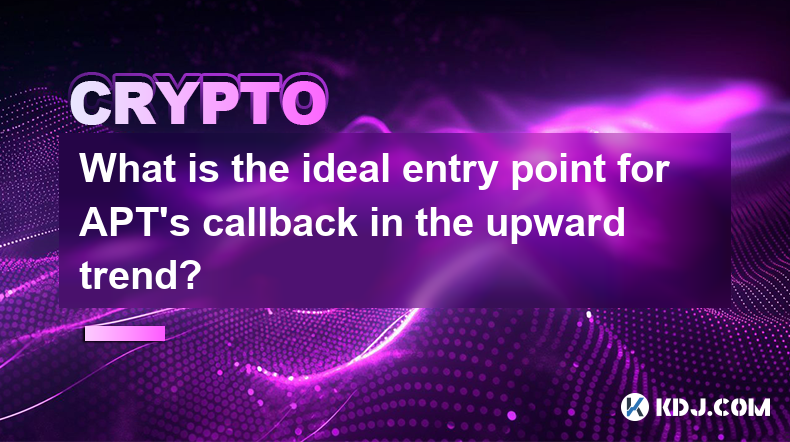
What is the ideal entry point for APT's callback in the upward trend?
Apr 24,2025 at 11:50pm
In the world of cryptocurrency trading, identifying the ideal entry point for a token's callback in an upward trend is crucial for maximizing profits and minimizing risks. APT, or Aptos, is a relatively new player in the crypto market, and understanding its price movements and potential entry points can be challenging. This article delves into the facto...
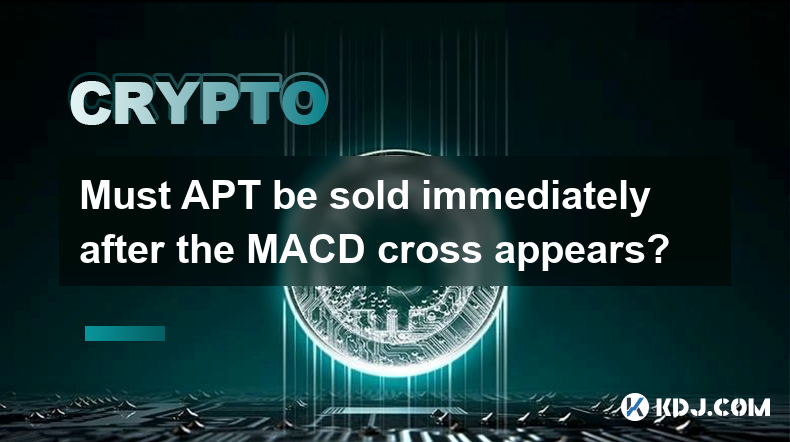
Must APT be sold immediately after the MACD cross appears?
Apr 24,2025 at 07:43pm
The question of whether APT (Aptos) should be sold immediately after a MACD (Moving Average Convergence Divergence) cross appears is a common one among traders. The MACD is a popular technical indicator used to identify potential buy and sell signals in the cryptocurrency market. However, the decision to sell APT immediately after a MACD cross is not st...
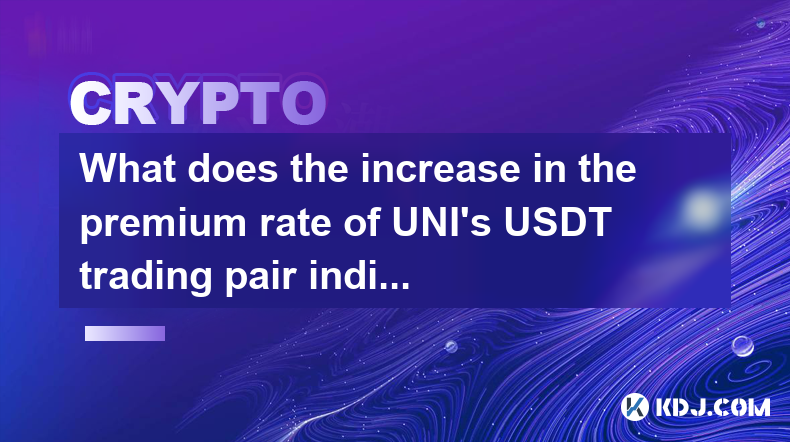
What does the increase in the premium rate of UNI's USDT trading pair indicate?
Apr 24,2025 at 09:21pm
The increase in the premium rate of UNI's USDT trading pair is a significant indicator within the cryptocurrency market, reflecting various dynamics and sentiments among traders and investors. This phenomenon can provide insights into the perceived value, demand, and market conditions surrounding Uniswap's native token, UNI. In this article, we will exp...

How to adjust the position when the implied volatility of APT suddenly rises?
Apr 24,2025 at 09:42pm
When the implied volatility of APT suddenly rises, it can significantly impact your trading positions. Adjusting your positions effectively requires a thorough understanding of the situation and a strategic approach. In this article, we will explore how to manage your positions when the implied volatility of APT increases unexpectedly. Understanding Imp...

Does the increase in net outflow of APT exchanges represent bullishness?
Apr 24,2025 at 06:57pm
The concept of net outflow of APT (Aptos) from exchanges and its potential correlation with bullish sentiment is a topic of interest within the cryptocurrency community. The net outflow refers to the volume of APT tokens being withdrawn from cryptocurrency exchanges, which can be interpreted as a signal of investor behavior and market sentiment. This ar...

What impact does the large transfer on the APT chain have on the price?
Apr 25,2025 at 02:42am
The large transfer of tokens on the APT (Aptos) blockchain can have a significant impact on the price of APT tokens. When large volumes of tokens are moved, it often signals market participants to pay attention, as these movements can be indicative of various market dynamics. Understanding the nature of these transfers, the parties involved, and the con...

What is the ideal entry point for APT's callback in the upward trend?
Apr 24,2025 at 11:50pm
In the world of cryptocurrency trading, identifying the ideal entry point for a token's callback in an upward trend is crucial for maximizing profits and minimizing risks. APT, or Aptos, is a relatively new player in the crypto market, and understanding its price movements and potential entry points can be challenging. This article delves into the facto...

Must APT be sold immediately after the MACD cross appears?
Apr 24,2025 at 07:43pm
The question of whether APT (Aptos) should be sold immediately after a MACD (Moving Average Convergence Divergence) cross appears is a common one among traders. The MACD is a popular technical indicator used to identify potential buy and sell signals in the cryptocurrency market. However, the decision to sell APT immediately after a MACD cross is not st...

What does the increase in the premium rate of UNI's USDT trading pair indicate?
Apr 24,2025 at 09:21pm
The increase in the premium rate of UNI's USDT trading pair is a significant indicator within the cryptocurrency market, reflecting various dynamics and sentiments among traders and investors. This phenomenon can provide insights into the perceived value, demand, and market conditions surrounding Uniswap's native token, UNI. In this article, we will exp...
See all articles























































































